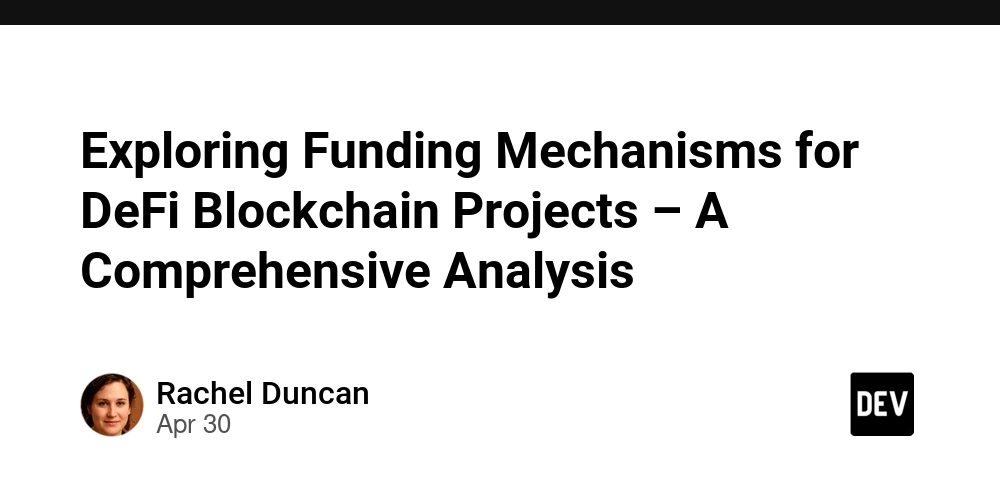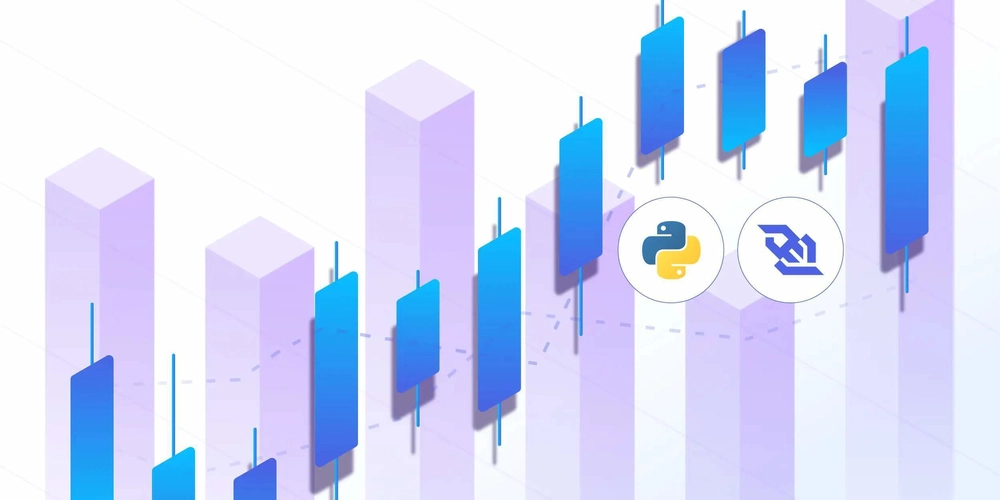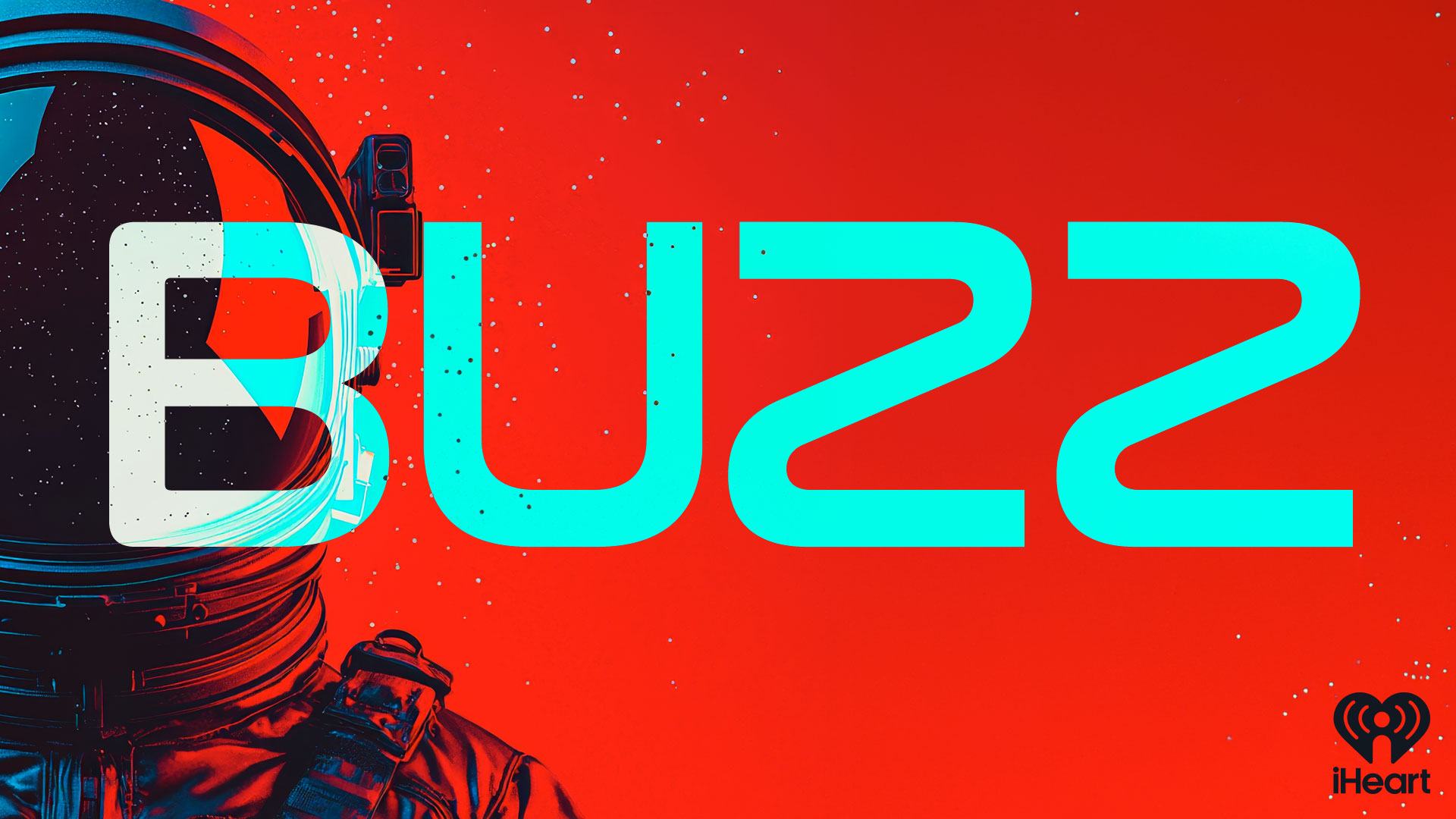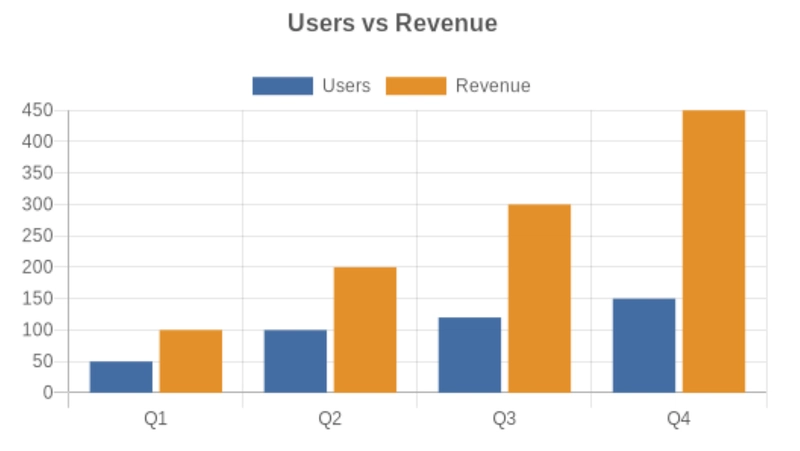Exploring Funding Mechanisms for DeFi Blockchain Projects – A Comprehensive Analysis
Abstract This post examines various funding avenues that are driving the rapid evolution of decentralized finance (DeFi). We break down the significance of venture capital, token sales, decentralized governance, and innovative yield farming models, while also highlighting challenges such as regulatory uncertainty and market volatility. We delve into background trends, share practical applications, and provide a forward-looking outlook on cross-chain solutions and institutional adoption. With detailed tables and bullet lists for clarity, this comprehensive guide is designed for developers, investors, and enthusiasts alike. Introduction The world of DeFi is evolving at a rapid pace. By leveraging blockchain technology, decentralized finance aims to disrupt traditional financial systems with more inclusive, autonomous, and transparent solutions. However, one of the most pressing challenges that DeFi projects face is funding. As these ventures strive to incorporate innovative models and maintain trust among stakeholders, the choice of funding mechanism becomes crucial. In this post, we discuss the mechanisms that fuel DeFi projects—from venture capital to alternative methods like token sales and decentralized autonomous organizations (DAOs). We will also explore innovative funding trends, such as yield farming and NFT-based collateralization, and suggest how future improvements might enhance project sustainability. For an even deeper dive into this subject area, you can check out the Original Article. Background and Context Blockchain technology has transformed our view of finance by establishing peer-to-peer networks that operate without central authorities. The rise of DeFi has accelerated this trend. Early pioneers including Compound, MakerDAO, and Aave have employed various funding models to power their ecosystems. Key Historical Milestones Emergence of ICOs: The explosion of Initial Coin Offerings (ICOs) around 2017 demonstrated the potential of raising capital without intermediaries. Rise of DAOs: Decentralized Autonomous Organizations represent a shift in governance, allowing communities to vote on strategic funding decisions. Evolution of Yield Farming: This model rewards participants with additional tokens for providing liquidity, encouraging community contribution and network growth. Essential Definitions Blockchain: A decentralized ledger technology where recorded transactions are immutable. DeFi: Decentralized Finance represents financial services made available on a public decentralized blockchain network. DAO: A decentralized organization that operates using smart contracts to execute governance decisions. These developments provide the backdrop for understanding the funding mechanisms central to modern DeFi projects. Core Concepts and Features In the DeFi landscape, funding comes from several sources. Here, we break down the major methods with a focus on their features and interconnections. 1. Venture Capital (VC) Traditional venture capital remains a significant funding source. Many blockchain projects have attracted early-stage investments that not only infuse capital but also provide access to seasoned industry networks. VC funding helps projects refine strategies and build robust technical infrastructure. Key Points: Expertise and Resources: VCs provide strategic guidance along with capital. Long-Term Commitment: Institutional investors may also bring stability. Examples: Projects like Compound, MakerDAO, and Aave have benefited from VC participation. 2. Token Sales Token sales are a hallmark of blockchain projects—democratizing participation: Initial Coin Offerings (ICOs): Early models raising funds by selling tokens in exchange for cryptocurrency. Initial Exchange Offerings (IEOs) and Security Token Offerings (STOs): Enhance compliance and trust among investors. Tokenization: As a process, tokenization of assets creates liquidity and fractional ownership. For further reading, see Tokenization of Assets. 3. Decentralized Autonomous Organizations (DAOs) DAOs allow community-driven funding and governance: Collective Decision-Making: Stakeholders have a say in allocation, ensuring transparency. Historical Example: The DAO marked both the promise and pitfalls of DAO-led projects. Evolving Models: Modern implementations benefit from lessons learned and improved security, as detailed in DAO Funding for Blockchain Projects. 4. Yield Farming and Liquidity Mining This innovative model rewards users for locking their assets into a liquidity pool: Incentivized Participation: Users earn returns in the form of additional tokens. Community-Driven Growth: It fosters both liquidity and engagement within the ecosystem. Further Reading: Explore details in Blockchain Project Funding Through Yield Farming. Table – Funding Mechanisms Overview F

Abstract
This post examines various funding avenues that are driving the rapid evolution of decentralized finance (DeFi). We break down the significance of venture capital, token sales, decentralized governance, and innovative yield farming models, while also highlighting challenges such as regulatory uncertainty and market volatility. We delve into background trends, share practical applications, and provide a forward-looking outlook on cross-chain solutions and institutional adoption. With detailed tables and bullet lists for clarity, this comprehensive guide is designed for developers, investors, and enthusiasts alike.
Introduction
The world of DeFi is evolving at a rapid pace. By leveraging blockchain technology, decentralized finance aims to disrupt traditional financial systems with more inclusive, autonomous, and transparent solutions. However, one of the most pressing challenges that DeFi projects face is funding. As these ventures strive to incorporate innovative models and maintain trust among stakeholders, the choice of funding mechanism becomes crucial. In this post, we discuss the mechanisms that fuel DeFi projects—from venture capital to alternative methods like token sales and decentralized autonomous organizations (DAOs). We will also explore innovative funding trends, such as yield farming and NFT-based collateralization, and suggest how future improvements might enhance project sustainability.
For an even deeper dive into this subject area, you can check out the Original Article.
Background and Context
Blockchain technology has transformed our view of finance by establishing peer-to-peer networks that operate without central authorities. The rise of DeFi has accelerated this trend. Early pioneers including Compound, MakerDAO, and Aave have employed various funding models to power their ecosystems.
Key Historical Milestones
- Emergence of ICOs: The explosion of Initial Coin Offerings (ICOs) around 2017 demonstrated the potential of raising capital without intermediaries.
- Rise of DAOs: Decentralized Autonomous Organizations represent a shift in governance, allowing communities to vote on strategic funding decisions.
- Evolution of Yield Farming: This model rewards participants with additional tokens for providing liquidity, encouraging community contribution and network growth.
Essential Definitions
- Blockchain: A decentralized ledger technology where recorded transactions are immutable.
- DeFi: Decentralized Finance represents financial services made available on a public decentralized blockchain network.
- DAO: A decentralized organization that operates using smart contracts to execute governance decisions.
These developments provide the backdrop for understanding the funding mechanisms central to modern DeFi projects.
Core Concepts and Features
In the DeFi landscape, funding comes from several sources. Here, we break down the major methods with a focus on their features and interconnections.
1. Venture Capital (VC)
Traditional venture capital remains a significant funding source. Many blockchain projects have attracted early-stage investments that not only infuse capital but also provide access to seasoned industry networks. VC funding helps projects refine strategies and build robust technical infrastructure.
Key Points:
- Expertise and Resources: VCs provide strategic guidance along with capital.
- Long-Term Commitment: Institutional investors may also bring stability.
- Examples: Projects like Compound, MakerDAO, and Aave have benefited from VC participation.
2. Token Sales
Token sales are a hallmark of blockchain projects—democratizing participation:
- Initial Coin Offerings (ICOs): Early models raising funds by selling tokens in exchange for cryptocurrency.
- Initial Exchange Offerings (IEOs) and Security Token Offerings (STOs): Enhance compliance and trust among investors.
- Tokenization: As a process, tokenization of assets creates liquidity and fractional ownership. For further reading, see Tokenization of Assets.
3. Decentralized Autonomous Organizations (DAOs)
DAOs allow community-driven funding and governance:
- Collective Decision-Making: Stakeholders have a say in allocation, ensuring transparency.
- Historical Example: The DAO marked both the promise and pitfalls of DAO-led projects.
- Evolving Models: Modern implementations benefit from lessons learned and improved security, as detailed in DAO Funding for Blockchain Projects.
4. Yield Farming and Liquidity Mining
This innovative model rewards users for locking their assets into a liquidity pool:
- Incentivized Participation: Users earn returns in the form of additional tokens.
- Community-Driven Growth: It fosters both liquidity and engagement within the ecosystem.
- Further Reading: Explore details in Blockchain Project Funding Through Yield Farming.
Table – Funding Mechanisms Overview
| Funding Mechanism | Key Characteristics | Examples/Links |
|---|---|---|
| Venture Capital (VC) | Strategic guidance, long-term investment | Compound, MakerDAO, Aave |
| Token Sales | Democratized access, ICO/IEO/STO models, asset tokenization | Tokenization of Assets |
| DAOs | Community governance, decentralized decision-making | The DAO, DAO Funding for Blockchain Projects |
| Yield Farming | Incentivized participation, liquidity mining | Yield Farming Funding |
Applications and Use Cases
The selection of a funding mechanism greatly influences the success and scalability of DeFi projects. Below, we discuss practical applications alongside emerging use cases:
A. Institutional Investments and Cross-Chain Solutions
- Institutional Investors: Traditional institutions increasingly perceive DeFi projects as viable investments, leading to a hybrid model where VC funding meets decentralized principles.
- Cross-Chain Interoperability: Enhanced interoperability, as seen in initiatives like Arbitrum and Cross-Chain Transactions, allows projects to expand beyond a single network, drawing in diverse investor bases.
B. Smart Contract Audits and Security Measures
- Emphasis on Security: With the rapid pace of growth, ensuring smart contract security is paramount. Detailed audits build trust with investors and users alike.
- Example: Arbitrum and Smart Contract Audits underline the emerging best practices in the field.
- Community Trust: Transparent communication about security measures is crucial. Additional insights on blockchain security can be found in the Blockchain Security section.
C. NFT Collateralization and Digital Asset Funding
- NFTs as Collateral: The evolving use of Non-Fungible Tokens (NFTs) as collateral introduces a new financial instrument. These models allow projects to unlock liquidity based on digital asset value.
- Real-World Example: NFT projects are increasingly integrated within DeFi frameworks, merging the worlds of digital art and financial innovation.
- Supporting Article: For a deep dive into NFT innovation, check out Beeple Genesis on Arbitrum.
Bullet List – Key Applications
- Institutional Investment: Bringing in regulated and long-term funding.
- Cross-Chain Integration: Enhancing scalability and user accessibility.
- Security Enhancement: Implementing rigorous smart contract audits.
- NFT-based Funding: Unlocking liquidity through collateralized digital assets.
Challenges and Limitations
While the potential is enormous, DeFi funding is not without its hurdles. Some of the significant challenges include:
- Regulatory Uncertainty: Regulatory frameworks around blockchain and crypto remain ambiguous. This can delay investment decisions and complicate compliance. For a broader perspective, see Blockchain Regulation.
- Security Concerns: Smart contract vulnerabilities have led to several high-profile hacks. Projects must invest in periodic security audits to safeguard against vulnerabilities.
- Market Volatility: The cryptocurrency market is notoriously volatile, affecting token values and investor sentiment. Robust risk management is essential to mitigate these effects.
- Community Trust: Sustained community engagement is critical, and projects must maintain transparency through clear governance protocols – an area successfully navigated by well-known DAOs.
- Interoperability Issues: Although cross-chain solutions are emerging (see Arbitrum and Cross-Chain Transactions), creating seamless connectivity between blockchains remains a technical and regulatory challenge.
Future Outlook and Innovations
As the DeFi space continues to mature, several future trends and innovations may redefine the funding landscape:
Institutional Adoption
Recent trends indicate a surge in interest from large institutional investors. This will not only provide a liquidity boost but also lend credibility to DeFi projects. Future models may blend traditional venture capital with innovative decentralized approaches to achieve the best of both worlds. For insights on institutional interest, see Arbitrum and Institutional Adoption.
Enhanced Cross-Chain Interoperability
The push for cross-chain solutions is transforming the way assets and information flow between disparate networks. Projects that successfully implement interoperability protocols will likely attract diversified funding. Cross-chain technologies serve as an important step in reaching mainstream adoption, as outlined in various studies on Blockchain Interoperability.
NFT as a Collateral and Innovative Financial Instruments
The utilization of NFTs as collateral could revolutionize asset-backed lending in the digital economy. By bridging the gap between traditional finance and digital creativity, NFTs offer novel ways to secure capital while simultaneously enhancing asset liquidity.
Community-Driven Funding Protocols
The next generation of funding may revolve around innovative platforms that enable real-time community contributions. Decentralized Funding mechanisms through DAOs and community tokens empower users to vote on project expenditures, ensuring a more democratic and transparent allocation of resources. An example is the approach discussed in Arbitrum and On-Chain Governance.
Additional Insights from Open-Source Communities
The importance of open-source funding for blockchain projects is gaining momentum. Notable discussions on Open Source Funding for Scientific Research and Sustaining Open Source highlight the evolving nature of financial support in the tech landscape. These models emphasize transparency, community support, and long-term sustainability.
The Role of Arbitrum in Innovation
Arbitrum, a popular layer-2 scaling solution, is emerging as a significant player in supporting DeFi projects. Its innovative features contribute to both improved transaction speeds and lower fees. Here are some Arbitrum-related topics of interest:
Arbitrum and DeFi Yield: Exploring how yield-based funding models are integrated on the Arbitrum network.
Learn more here.Arbitrum and Institutional Adoption: Analyzing how traditional finance is aligning with decentralized systems.
Read more here.Arbitrum and Cross-Chain Transactions: Enabling seamless asset transfer between chains is key to future interoperability.
Discover more here.Arbitrum and On-Chain Governance: Voting and transparency in funding allocation are boosted by on-chain governance.
Explore this topic.Arbitrum and Smart Contract Audits: Security is paramount, and robust audit frameworks ensure trustworthiness.
Read further.
Summary and Conclusion
DeFi represents a new frontier in finance, combining blockchain technology with innovative funding models that defy traditional paradigms. By integrating VC investments, token sales, DAOs, and yield farming, these projects pave the way for a more inclusive and efficient financial system. However, challenges such as regulatory uncertainty, cybersecurity, and market volatility must be addressed to achieve sustainable growth.
The future of DeFi funding lies in a hybrid approach that balances institutional investment with community empowerment. Innovations like cross-chain interoperability and NFT collateralization will play a pivotal role in evolving these models. With improved security measures and clearer regulatory frameworks, DeFi projects can unlock unprecedented levels of trust and global reach.
For developers and blockchain enthusiasts, the interplay between these funding mechanisms not only provides opportunities for expansion but also invites responsible innovation. By engaging in community-driven governance and leveraging the potential of decentralized networks, stakeholders can collectively drive the next chapter of financial evolution.
Key Takeaways
- Diverse Funding Models: Traditional VC and innovative token sales are both crucial.
- Emerging Trends: Cross-chain interoperability and NFT collateralization are on the rise.
- Security & Regulation: Robust security practices and clearer regulations are essential.
- Community Empowerment: Decentralized governance through DAOs boosts transparency and trust.
For further reading on sustainable open-source funding, check out related discussions on GitHub Sponsors and Open Source Funding and detailed insights on Elastic License and Fair Code Practices.
By navigating and balancing these funding strategies, DeFi projects are well-positioned to redefine the future of finance. As the industry matures, the blending of traditional investment methods with decentralized, community-driven models could set new standards for innovation and growth.
In conclusion, understanding and implementing the right funding mechanism is not just about securing capital – it is about creating a resilient ecosystem that garners trust, ensures security, and fosters dynamic participation from a global community. With continued innovation and adaptation, the promise of DeFi can transform the way we think about and engage in modern financial services.
This article was created by a technical expert with a passion for blockchain innovation and a deep understanding of open-source communities. Your thoughts and feedback are welcome as we navigate this rapidly changing landscape together.
For more updates and detailed analysis, be sure to follow our posts and visit reputable sources such as Decrypt and Reddit’s DeFi community.
Happy innovating in the world of DeFi!









































































